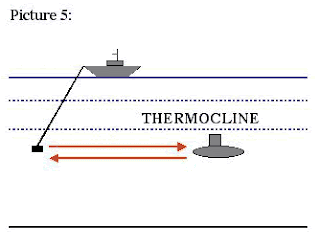As argued in Part One (August 1, 2016) compared to the open ocean (where SSBN commanders prefer to operate) the South China Sea is restrictive.
China's SSBNs might possibly be sent, from their main Yulin/Sanya/Hainan Island Base, north to operate in the protected East China Seas or Yellow Seas. But movement north would put them in closer range of Japanese and South Korean SSKs and Russian SSKs and SSNs. Very quiet, experienced US SSNs (that can range far and fast) might be the main hazard for Chinese SSBNs.
China's SSBNs might possibly be sent, from their main Yulin/Sanya/Hainan Island Base, north to operate in the protected East China Seas or Yellow Seas. But movement north would put them in closer range of Japanese and South Korean SSKs and Russian SSKs and SSNs. Very quiet, experienced US SSNs (that can range far and fast) might be the main hazard for Chinese SSBNs.
Seafloor sensor map from The Tools of Owatatsumi Japan’s Ocean Surveillance and Coastal Defence Capabilities (2015, ANU Press) .
If a Chinese SSBN wanted to break out of these restricted waters into the wider Pacific Ocean it might move east through the gap between Northern Luzon and Kyushu (Japan's most southern main island). But this would put the SSBN further away from the protecting Chinese air force. And also the the SeaWeb undersea array (see the Map above) has been intentionally laid by Japan and the US between Luzon and Kyusho to detect just such a submarine breakout attempt. Noisy Chinese SSBN signatures would be easily picked up.
To make life even more difficult the SeaWeb sensors can be positioned in restricted waters so as to be just below a Chinese SSBN's maximum diving depth and above it.
THERMOCLINES NO COVER
People sometimes think that if a submarine dives deep enough it can take advantage of the major change in water temperature (thermocline) by sitting safely below the layer. This would be correct and comforting to the submarine commander if the sensor threat were only on the surface.
Problems occur for the SSBN if the enemy can deploy gadgets that can get TO (or are below) the sub's protective thermocline layer. These gadgets-tactics include:
1. an ASW surface ship's towed sonar array ("Picture 5:" below) which is most likely to be set deep
(say 300 or 400m sonar).
(say 300 or 400m sonar).
2. long dipping sonars from helicopters that can suddenly appear. Like towed sonars, dipping sonars
may well "active" - hence able bounce off the hull and detect even subs that are hardly moving.
An SSBN switching its reactor to silent mode, while using battery powered thrusters, will not
totally hide it from active sonar.
may well "active" - hence able bounce off the hull and detect even subs that are hardly moving.
An SSBN switching its reactor to silent mode, while using battery powered thrusters, will not
totally hide it from active sonar.
3. sonobuoys dropped in a pattern, in front of the sub's likely path and set to reach the same depth as
the sub
the sub
4. seafloor arrays (sitting on the black line at "Picture 5:" above) or tethered sensor arrays can be
usefully laid for long term use in restrictive waters (like the Yellow Sea, East China Sea and South
China Sea). Or, in addition to sonobuoys, they could be laid (especially air-dropped) on a shorter
term basis in front of the likely path of the SSBN.
usefully laid for long term use in restrictive waters (like the Yellow Sea, East China Sea and South
China Sea). Or, in addition to sonobuoys, they could be laid (especially air-dropped) on a shorter
term basis in front of the likely path of the SSBN.
Diagram 1 courtesy USN 2006. A seafloor array, called "Fixed Surveillance System (FSS)" is neatly described in U.S. Navy Program Guide 2015 (large PDF 6 MB) which explains, on page 128: "...FSS comprises a series of arrays deployed on the ocean floor in deep-ocean areas and strategic locations. Due to its long in-situ lifetime, it provides indications and warning of hostile maritime activity before conflicts begin. The system consists of two segments: the integrated common processor (ICP), which handles the processing, display, and communication functions; and the underwater segment, which consists of SOSUS, a long array of hydrophones,.." .
So this US openness on seafloor arrays feeds China's concerns over Chinese SSBNs having to operate in restricted waters. Concerns came to a head in 2009 when US sonar survey ship USNS Impeccable operated just 75 miles south of China's Yulin/Sanya/Hainan SSBN Naval Base. Chinese aircraft and naval militia boats buzzed Impeccable constantly and quite understandably.
The chances that Impeccable was dropping seafloor and tethered sensors were real, bothering the Chinese and it still bothers them.
Pete


